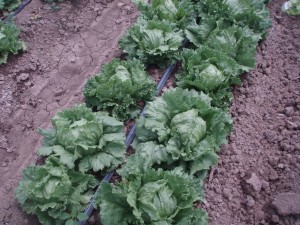Craig Andrus Farms, Salinas, CA – Drip Irrigation on Lettuce
 Craig Andrus is no stranger to sprinklers, but has been using drip on his 400 acres of romaine lettuce, Southeast of Salinas for over four years, now. He used to have a linear, but when it came time to replace it, he noticed the trend towards drip and made the change.
Craig Andrus is no stranger to sprinklers, but has been using drip on his 400 acres of romaine lettuce, Southeast of Salinas for over four years, now. He used to have a linear, but when it came time to replace it, he noticed the trend towards drip and made the change.
“My yields are higher, the crop is more uniform, and the quality is better because of perfect growing conditions.”
Craig Andrus Farms, Salinas, CA – Drip Irrigation on Lettuce Read More »
